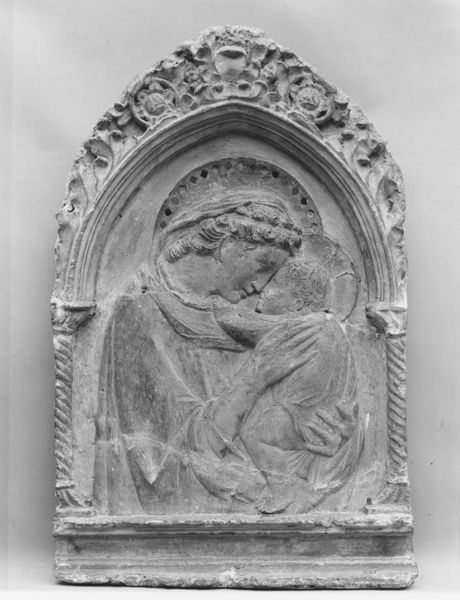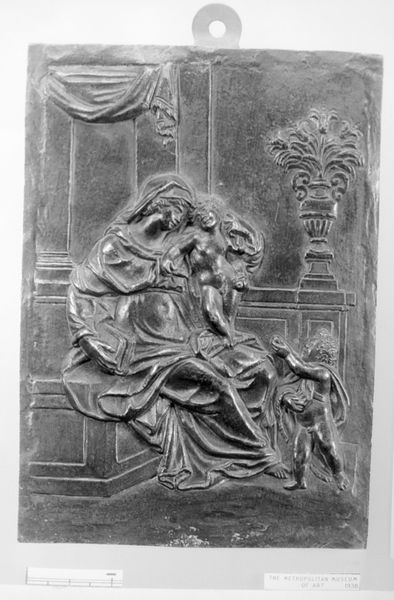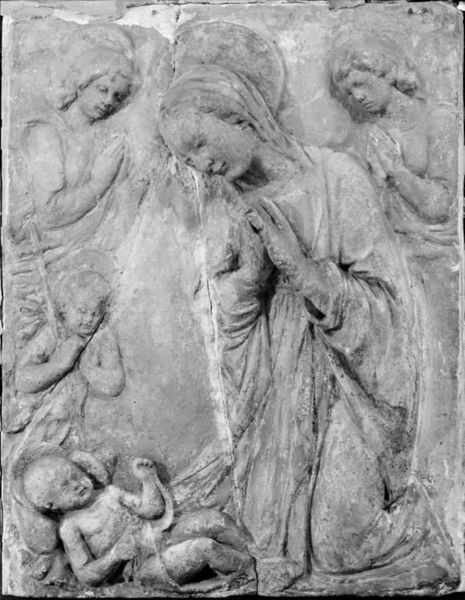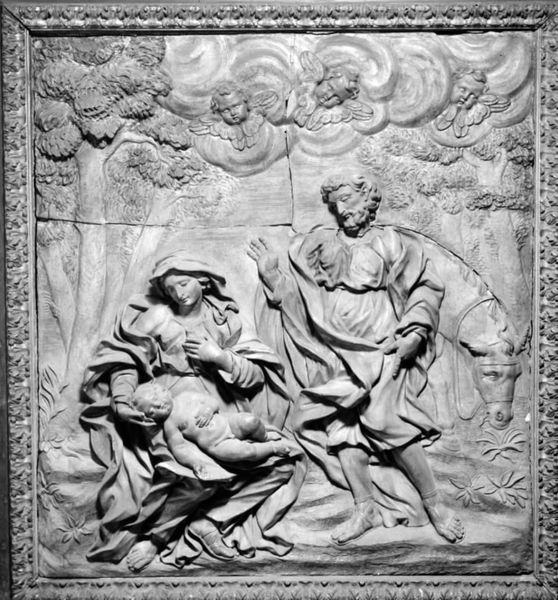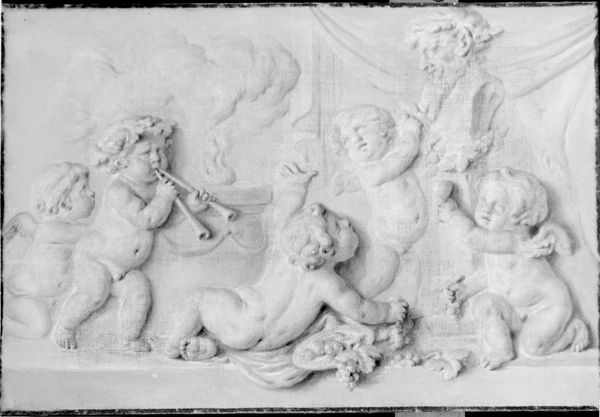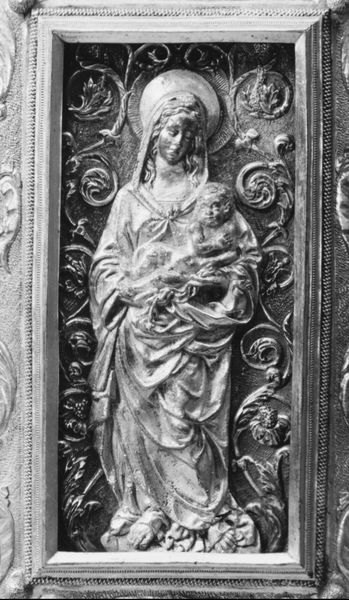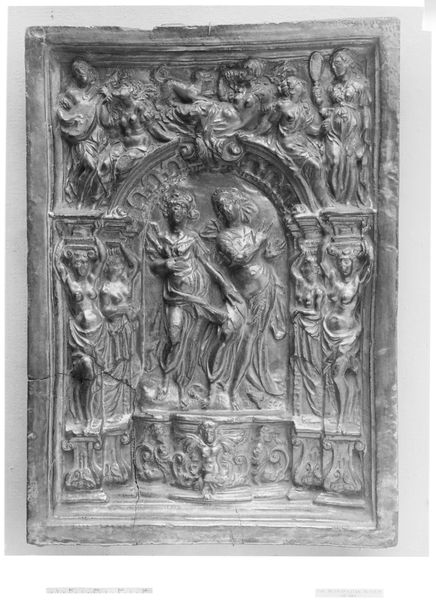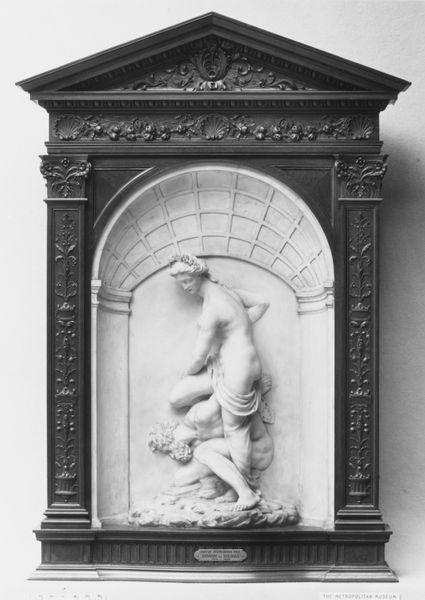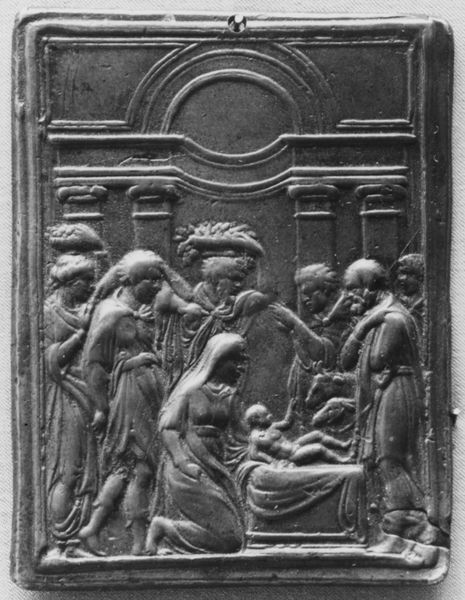
relief, sculpture, wood
#
allegory
#
baroque
#
sculpture
#
relief
#
classical-realism
#
figuration
#
sculpture
#
black and white
#
wood
#
decorative-art
Dimensions: Overall ((a: confirmed)): 35 1/4 x 39 1/2 in. (89.5 x 100.3 cm); Overall ((b: confirmed)): 35 1/4 x 40 in. (89.5 x 101.6 cm)
Copyright: Public Domain
Curator: This is a particularly striking pair of overdoors from a porte cochère, created between 1673 and 1683, possibly by Jean Richer. What do you notice first about it? Editor: The dominant, almost severe, presence of the central female figure holding that rather large sword. The relief’s sharp contrast gives it a weighty feel, even though it’s ultimately decorative, intended for... above a doorway. Curator: Exactly. It's crucial to understand the social context here. This sculpture would have visually reinforced notions of power and authority associated with the elite. Who do you think she is? Editor: She's obviously a classic allegorical figure, probably Justice, or perhaps even Minerva herself, given the Roman influence. The sword certainly emphasizes power and judgement. What is fascinating, though, is the presence of Cupid, a classical god that normally softens the imagery in Renaissance and Baroque iconography but somehow here it looks even more intense with Cupid below. Curator: That's an insightful observation. While appearing traditionally ornamental, her sword represents something greater when situated within its social sphere. It could be read as more aggressive when reflecting on colonial implications from France during this period. These symbolic elements were used as statements, dictating the role and position of certain members within society. Editor: Absolutely. The motifs tell stories beyond their face value. Justice, the rose garlands, and that infant Cupid are a concentrated collection of symbolic associations that spoke to cultural values back then and allow us to read different associations in relation to current issues now. Curator: Considering the period of origin, the baroque theatricality also has roots in classical-realism. It provides visual cues on understanding hierarchical dynamics still permeating our lives today. The material too – simple wood carved to deliver this sort of powerful message. Editor: I hadn't considered the impact of the wood itself. So what appears to be purely decorative craftsmanship carries significant symbolic, cultural, and even political meaning. It certainly casts a new light on these overdoors for me.
Comments
No comments
Be the first to comment and join the conversation on the ultimate creative platform.
